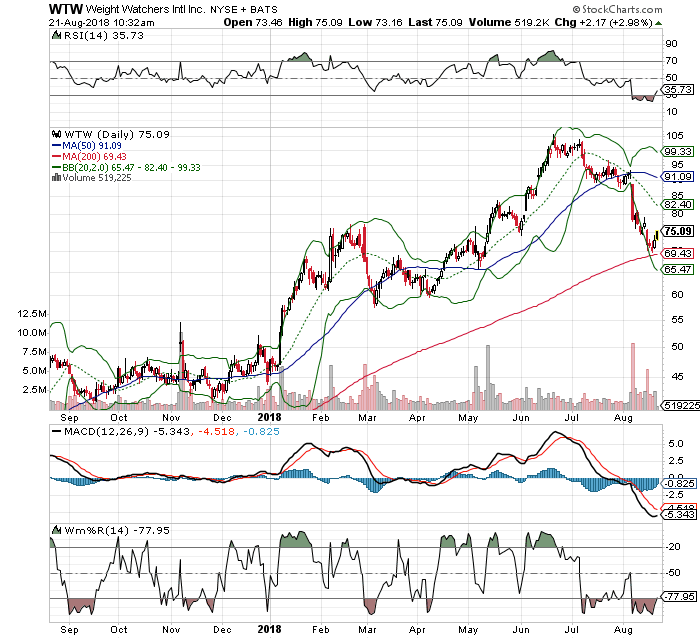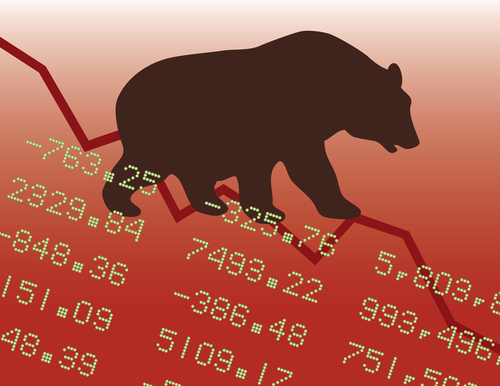The Exact Time to Jump Out of Any Trade

It’s not about having the perfect strategy.
It’s about the rule you abide by with each trade.
One of the biggest issues facing all walks of traders is a severe lack of discipline and structure in stock buying habits. Many fail to use stop losses, or even protect gains with a simple trailing stop loss strategy. Others risk far too much.
Others aren’t so sure when to jump out of a trade. But that’s actually the easy part.
If you have money in your pocket, take the win and move on. Then again, my stock could run up another 100%. I don’t want to miss out on the potential to make more money.
So, what do I do?
For one, don’t be greedy. Two, don’t get caught up in the rush of herd mentality.
Three, keep your eye on specific technical pivot points, including Bollinger Bands (2,20), MACD, relative strength (RSI), and Williams’ %R (W%R). When they tell you to get out of a trade, get out of the trade.
Look at Weight Watchers (WTW) for example.

After exploding from $60 to $105, the stock began to fall apart. That’s where you wanted to take your money and run. But that’s easier said than done, right? It’s easier than you think.
In July 2018, the stock became aggressively overbought at its upper Bollinger Band (2,20). In fact, each time this stock hits its upper Band, it has a tendency to pullback. At the same time, RSI was above its 70-line, overbought.
MACD had pushed to an extreme high in overbought territory.
Even Williams’ %R was above its 20-line, overbought. With each aligning in overbought territory, that’s where you want to take your money and run.
We’ve seen the same set up in this stock many times over the years. We saw it happen in January 2018 for example. We saw it happen briefly in May 2018. We began to see it in June 2018, as well. Each time, the stock pulled back.
So, the next time you want to see if you can milk more money out of a trade, don’t.
If these technical pivot points align in overbought territory, it’s only a matter of time before the stock pulls back.
We all have the same goal when it comes to trading.
Like most investors, one of your top goals has been to enjoy a financially secure retirement at whatever age you choose. That being the case, it stands to reason that your retirement “nest egg” should ideally generate above-market returns, often with below-market risk.
But to do so, you need to have discipline and a well-established trading plan.
If not, you shouldn't be trading with real money.



